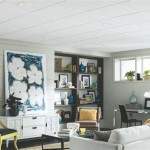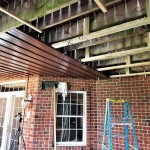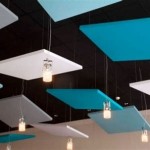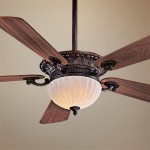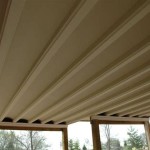What Brand of Ceiling Fan Is the Quietest?
The demand for quiet ceiling fans has increased significantly in recent years. Consumers are increasingly prioritizing a peaceful and undisturbed environment in their homes, and the noise generated by a ceiling fan can be a significant distraction. Identifying the “quietest” brand of ceiling fan involves a complex analysis of various factors, including motor type, blade design, construction materials, and individual unit quality control. No single brand consistently produces the absolute quietest fan across its entire product line; however, some brands are consistently recognized for their dedication to minimizing noise levels.
Several factors contribute to the noise produced by a ceiling fan. The electric motor that drives the fan is a primary source. The design and balance of the fan blades also significantly impact the sound produced as the blades rotate and interact with the air. Additionally, the quality of the fan's construction and the precision of its assembly play a crucial role in determining overall noise levels. Finally, even within a single product line from a single manufacturer, individual units can vary slightly in terms of noise production due to subtle variations in manufacturing.
Key Factors Determining Noise Levels in Ceiling Fans
The quietest ceiling fans incorporate several design and manufacturing elements that specifically target noise reduction. These include advancements in motor technology, blade design optimization, and meticulous construction techniques. Understanding these key factors is essential to evaluating different brands and models when seeking a quiet ceiling fan.
One of the most significant advancements in quiet ceiling fan technology is the use of direct current (DC) motors. Traditional alternating current (AC) motors generate more noise due to the way they operate, particularly at lower speeds. DC motors are significantly quieter and more energy-efficient. They use magnets to move the blades, reducing friction and generating less noise. Many manufacturers are now incorporating DC motors into their premium ceiling fan models, leading to a noticeable reduction in operating volume.
The design of the fan blades also plays a critical role in noise reduction. Aerodynamic blade designs, often featuring specifically calculated curves and angles, minimize air turbulence as the blades rotate. This reduces the "whooshing" sound commonly associated with ceiling fans. Blades constructed from lightweight materials, such as engineered polymers or carefully balanced wood, can further minimize noise by reducing the overall weight of the rotating components. Imbalances in blade weight or imperfections in their shape can lead to vibrations and increased noise levels. Blade pitch, or the angle of the blades, also plays a role. Optimal blade pitch allows for efficient airflow with minimal air resistance, thereby minimizing noise.
Construction quality and precision assembly are equally important. A poorly constructed fan with loose components or improper alignment can generate significant noise due to vibrations and rattling. High-quality ceiling fans are typically manufactured with tight tolerances and feature robust mounting systems that minimize vibration transfer to the ceiling. Using vibration-dampening materials in the motor housing and blade mounts can also help to reduce noise levels. Quality control during the assembly process is crucial to ensure that each fan operates smoothly and quietly. Regular balancing of both the motor and the blades is also an essential step in reducing noise.
Brands Known for Quiet Ceiling Fans
While no single brand can definitively claim to be the absolute quietest across all its models, some brands have consistently demonstrated a commitment to noise reduction through innovative design and high-quality construction. These brands are often considered to be among the best choices for consumers seeking a quiet ceiling fan experience. Understanding which brands are best for quiet function will help consumers make the right choices when purchasing.
Hunter Fan Company is a long-standing and reputable brand in the ceiling fan industry. While not all Hunter fans are specifically designed for ultra-quiet operation, they offer a selection of models that incorporate DC motors and balanced blade designs. Hunter often emphasizes reliability and durability, which contributes to a longer lifespan and consistent performance, reducing the likelihood of noise issues arising over time. Their focus on engineering and quality control has made them a trusted name in the industry. Some specific Hunter models are marketed as "whisper-quiet," indicating a deliberate effort to minimize noise levels during operation.
Minka-Aire is another brand frequently mentioned in discussions about quiet ceiling fans. They offer a wide range of contemporary and modern designs, often incorporating DC motors and aerodynamic blade profiles. Minka-Aire's emphasis on aesthetics doesn't come at the expense of performance; their fans are generally well-regarded for their quiet operation. Minka-Aire is known for offering a variety of styles, from minimalist designs to ornate and decorative models, all while maintaining a focus on minimizing noise. They use high-quality materials and precise manufacturing processes to ensure smooth and quiet operation.
Big Ass Fans, while recognized for larger, commercial-grade fans, also produces residential models known for their exceptional performance and quiet operation. Their fans often feature sophisticated motor designs and perfectly balanced blades, resulting in minimal noise even at higher speeds. Big Ass Fans are typically more expensive than standard ceiling fans, but their performance and durability often justify the investment for consumers seeking the ultimate in quiet and efficient operation. Their residential fans often incorporate advanced technology, such as smart home integration and variable speed controls, further enhancing the user experience.
Evaluating Noise Levels: Specifications and Reviews
Determining the actual noise level of a ceiling fan before making a purchase can be challenging. Manufacturers often provide limited information regarding noise levels in their product specifications. However, consumers can use several methods to assess the potential noise output of a particular model. Utilizing manufacturer specifications and third-party reviews provides different perspectives.
When available, decibel (dB) ratings can provide an indication of a fan's noise level. However, it's important to note that these ratings are often measured under ideal conditions and may not accurately reflect real-world performance. A lower dB rating generally indicates a quieter fan, but it's essential to consider the context in which the measurement was taken. Some manufacturers may not provide dB ratings, or they may only provide them for specific speeds. It's also worth noting that decibel measurements are logarithmic, meaning that a small difference in dB can represent a significant difference in perceived loudness.
Reading online reviews from other consumers can provide valuable insights into the real-world noise levels of a ceiling fan. Pay attention to reviews that specifically mention noise, humming, or rattling. Look for reviews that describe the fan's performance at different speeds. It's important to consider a variety of reviews to get a balanced perspective, as individual experiences may vary. Be cautious of reviews that appear to be biased or overly positive, as these may not accurately reflect the product's performance. Look for reviews from verified purchasers and from reputable sources.
In addition to online reviews, consulting professional product reviews from reputable publications or websites can provide a more objective assessment of a ceiling fan's noise levels. These reviews often involve standardized testing procedures and may include decibel measurements taken under controlled conditions. Professional reviewers typically have the expertise to evaluate the fan's performance from a technical standpoint and can provide a more reliable comparison between different models. Look for reviews that specifically address noise levels and compare the fan's performance to other similar models.

The Best Ceiling Fans For Bedrooms By Size Fan Feature Delmarfans Com

The Best Ceiling Fans For Bedrooms By Size Fan Feature Delmarfans Com

Quiet Ceiling Fans Hunter Fan

6 Best Quietest Ceiling Fans With Lights Of 2024 Tested Tried

16 Best Ceiling Fans For Extra Airflow In 2024

Discover The Best Ceiling Fan Brands Quality Choices To Keep You Cool Delmarfans Com

Quiet Ceiling Fans

The Best Ceiling Fan Brand Hunter

Aoibox 46 White Ultra Quiet Ceiling Fan With Led Light And Remote Control 6 Sd Dc Motor Energy Efficient W 3 Color Snmx2840 The Home Depot

10 Best Ceiling Fan Brands In 2024 Top Picks
Related Posts

